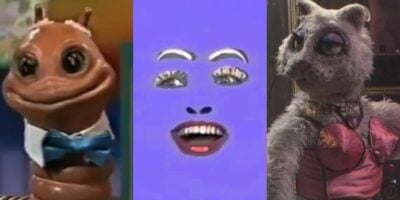If the lessons of post-modernism are correct, and language does indeed create social reality, calling your band TOY – including the deliberate capitalisation – is going to lead to an immediate and potentially misleading inference on the band’s music. Is it, for example, a band specialising in performing children’s songs, or possibly an act deriving its influence from the antics of Buzz Lightyear and his fellow CGI characters?
In the case of English band TOY, nothing could be further from the truth. “No, it’s never been suggested that we’re a children’s band,” laughs bass player Maxim ‘Panda’ Barron. In fact, TOY’s music – a blend of ‘60s psychedelia, ‘70s Krautrock and early ‘90s shoegaze – is arguably diametrically opposed to what’s suggested by the band’s name. But in a Lewis Carroll sort of a way, the name is entirely appropriate. “We originally found the name from the side of an old toy box in a friend’s house,” Barron explains. “We really liked the logo and how it was used on the box, and the name just jumped out at us. And it had a really good meaning and connotations for us, so we decided to use it.”
The genesis of TOY can be traced back some years before the encounter with the Victorian toy box, to when most of the band members were attending the same high school in the seaside suburb of Brighton. “We formed about three years ago, but we went to school together before that,” Barron says. “Even before we formed the band, we played guitar together. We met our keyboard player [Alejandra Diezand], who’d just come back from Spain, in Brighton, and we met our drummer [Charlie Salvidge] in London.”
Raised on a musical diet of Television, The Stooges and the Velvet Underground, the young TOY did what most young bands do – they sat around in a rehearsal space, jammed, and created songs. “We just got in a room and started playing music,” Barron says. “Our keyboard player bought a Korg synthesiser, which has a really amazing sound – that’s what Roxy Music had in the 1970s, and that helped form our sound. We’d grown up listening to Television and the Velvets, as well as bands like Can and Neu!, so we just spent a lot of time listening to music and thinking about ideas.”
The blend of Krautrock and psychedelia is, on one level, paradoxical – Krautrock is rooted in Germanic discipline, while psychedelia prides itself on its sonic and rhythmic elasticity. Upon closer examination, however, there’s a symbiotic relationship between the two genres. “Krautrock generally has a straight, hypnotic beat,” Barron muses. “But even though Krautrock can be seen as monochrome, it can definitely take you to other places. We really like that heavy, hypnotic beat. And there are plenty of Krautrock songs, especially from bands like Can, that are psychedelic.”
In mid-June TOY will leave the northern summer for the southern winter (“it’s not much of a summer here at the moment,” Barron notes wryly) to undertake their first Australian tour. Barron says TOY’s live show is more than a replication of its recorded sound. “We’ve played our record live quite a bit, and when you’ve been playing the songs live for a while, they tend to morph into something different,” Barron says. “Our live show is different to the record – we’re not just trying to replicate it. There’s quite a lot of room for improvisation in the songs. And while each show is different, it’s not a conscious thing to change it.”
BY PATRICK EMERY
TOY play Oxford Art Factory on Wednesday June 19.


































